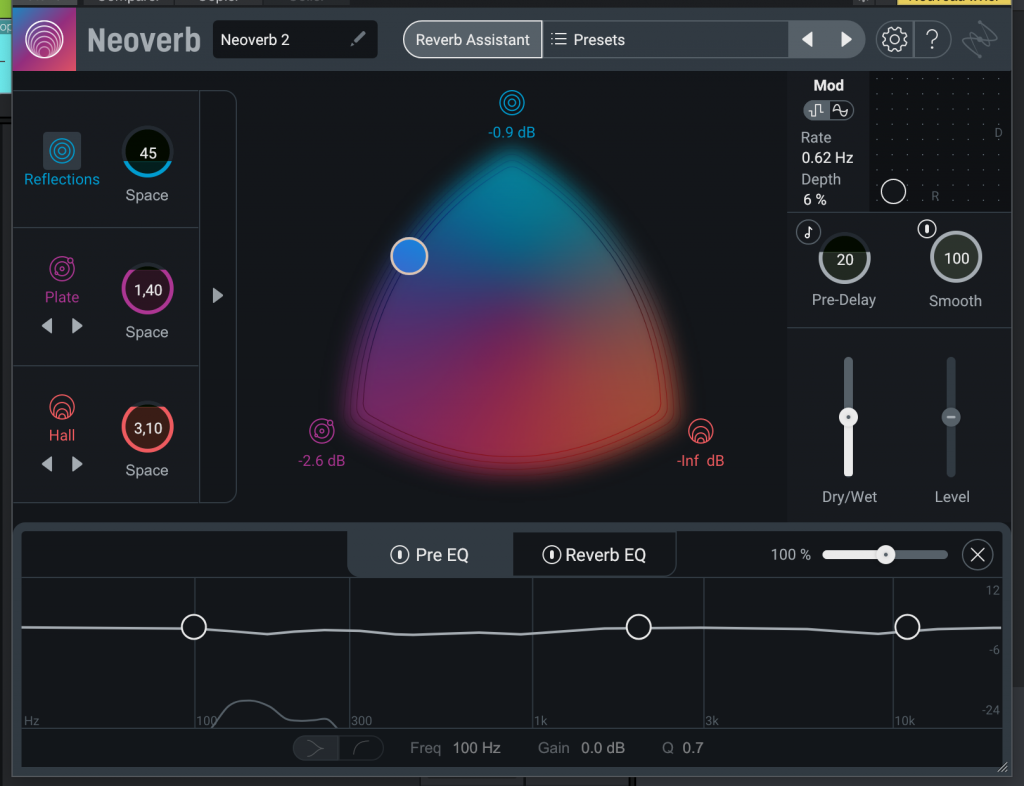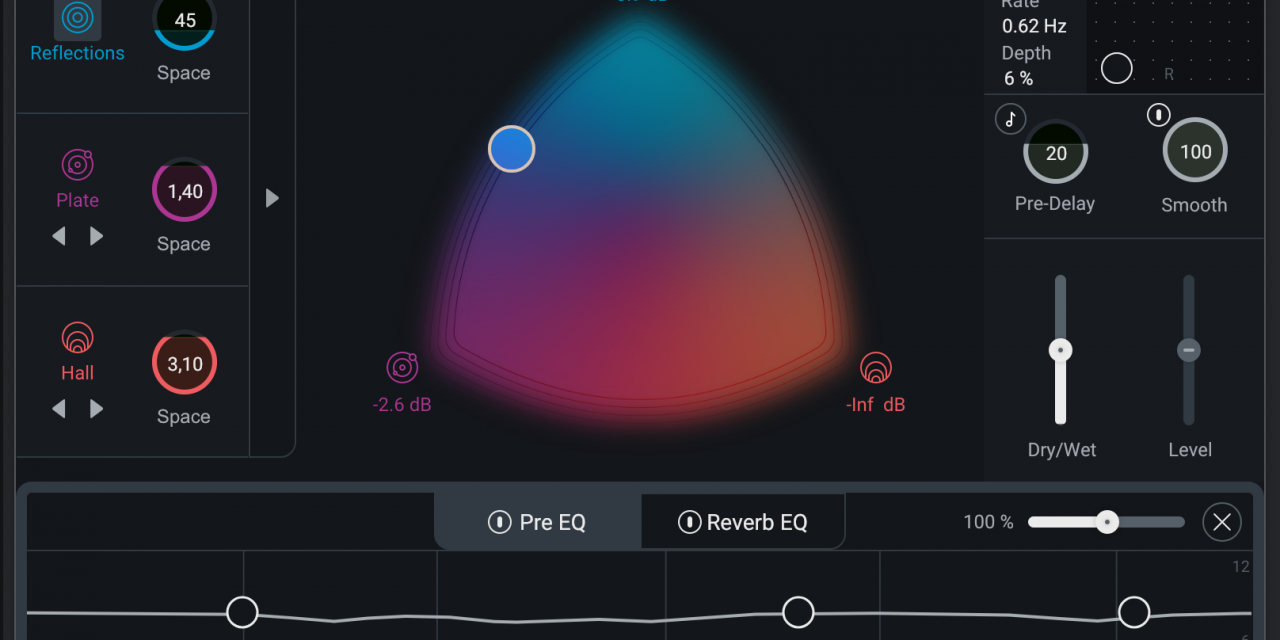We suspected that with the recent acquisition of Exponential Audio, Izotope was going to release a reverb. No surprise then when seeing Neoverb land, which does not prevent the plug-in from being surprising in more ways than one.
Dynamic processing, EQs, distos, tape simulators and 1001 audio restoration algos: it’s an understatement to say that Izotope’s arsenal of processing and effects commands respect. And yet, the publisher had never split a real reverb (like a real delay by the way). It must be said that developing this kind of effect is a specialty in itself, which must have pushed the publisher to buy Exponential Audio, a company set up by a former Lexicon engineer, extremely good at simulating spaces but much less at making nice interfaces. Luckily for us, Izotope has taken things in hand, as you can see from the moment we launch the plug-in.
interfaceForce is to note indeed, just by looking at the interface, that if it is the excellent algos of Exponential Audio which are at the heart of Neoverb, the ergonomists and graphic designers of Izotope have gone through there to offer us a tool much more practical and visually pleasing than a Phoenix Verb. We are not only leaving the geeky grayness of Exponential plugins in favor of a classy and uncluttered look that is resolutely Izotopian, but we also feel that the developers have made an effort not to drown us under the controls and to offer an inspiring and intuitive interface. On a dark background, a large XY pad colored in blue, fuchsia and red occupies most of the window while there are some essential settings to the left and right of the latter, and a simple EQ at the bottom of the interface: a destitution which is a pleasure to see.
Examination of the XY pad is enough to understand the first originality of Neoverb: it is not a question of choosing a single type of reverb to use it since three algorithms are used simultaneously and the pad is used to morph between them. At the top of the triangle, we have the algo responsible for early reflections, while at the bottom left, we can choose to load a plate, a room or a Medium chamber, and at the bottom right, we can load a Hall or Large Chamber program. No Spring, Shimmer or even Reverse Reverb: we feel that the purpose is not to make a tool for Sound Design but for mixing, which also explains the importance given to the double EQ which occupies all the bottom interface.
But we will come back to the latter to focus on the function specific to all Izotope software or almost: Neoverb offers an Assistant.
Conclusion
The concept of the reverb morphing between three quality algos is excellent, and it is complemented by an excellent interface such as the possibility of automatically reducing masking problems. By the way, Neoverb sounds great and is far easier to program than many competing products. Of course, this is not the most comprehensive reverb on the market in terms of settings like algos and sound designers will prefer to look to the more barred things found at Eventide or 2c audio. It is also not a concept as different as those imagined by Zynaptiq or Sonible in the “smart” reverb department and Izotope could certainly have taken his ideas further by making full use of the Relay plug-ins inside Neoverb. Still, for mixing tasks, we have here a plug-in that has the merit of advancing the schmilblick by making our lives easier and we can’t wait to see how it will evolve within the Izotopian ecosystem.





![[Portable Power Station] Lion ME 2,000 Safari](https://www.psybient.org/love/wp-content/uploads/lion-energy-safari-me-2000w-922wh-2-x-100w-solar-panel-suitcases-complete-solar-generator-kit-961753_1000x-440x264.webp)
![[Portable Power Station] Jackery Explorer 1,000](https://www.psybient.org/love/wp-content/uploads/New-Project-5-440x264.jpg)
